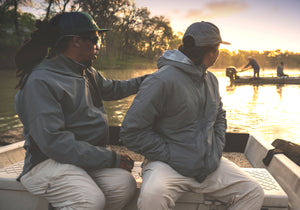Guest post by the Environment Agency
There’s so much more to fishing than just catching a fish. It’s a licence to get out in nature, to spend time with friends or family and to unwind.
Buying a fishing licence is not just a low-cost way to have a lot of fun. You’ll also help fund investments into many amazing projects that are improving waterways and helping communities all over the country. All income from fishing licences is used to:
- Create a healthier water environment to protect fish habitats and increase biodiversity
- Improve fish stocks in rivers and stillwaters
- Build fish passes to enable free movement of fish through rivers
- Fund taster sessions and events such as Get Fishing and Take a Friend Fishing to encourage participation and get more people into angling
- Run education projects such as Mayfly in the Classroom
- Fund fisheries enforcement teams who use fisheries law and powers to protect fish stocks and reduce illegal fishing and poaching
Let’s take a more detailed look at some of the work your licence fees are helping to fund.
River restoration projects
The Environment Agency funds river restoration projects such as the recent work on the River Granta in south Cambridgeshire. Delivered by the Wild Trout Trust, the project has improved habitat for wildlife including wild brown trout, as well as increasing the river’s ability to cope with flood and drought. Work included creating new spawning riffles for brown trout and minnows, and lowering riverbanks to allow floodwater into areas of woodland which should hold water, allowing it to soak back into the ground. Woody material, from large trees to twiggy brash, has been introduced to the river to provide habitat for fish, birds and insects as well as to ‘slow the flow’ of flood waters.

Fish passage improvement
Licence money has also contributed to improving fish passages, such as the DNAire project which has returned Atlantic salmon to the River Aire in Yorkshire for the first time in over 150 years. Through DNAire, 60km of river were reconnected, using Larinier fish passes to enable fish to swim up the passes without removing listed weirs. This means Atlantic salmon and other species are now able to swim upstream to spawning grounds in shallow waters near Skipton and their return signals a bright future for the Aire. As part of the project, free primary school visits also took place to help inspire the next generation to care for the river.

Increasing participation in fishing
To help get more people into fishing, the Environment Agency helps fund the Angling Trust’s Get Fishing campaign. Hundreds of taster events for all types of fishing are run across the year, allowing people of all ages and abilities to give it a go, for free or very low cost. Friendly, professional experts are on hand to guide participants and all attendees are provided with full angling equipment. Licence fee money also helps the Angling Trust to train new angling coaches, with 211 new Level 1 coaches trained in 2020/21. The Environment Agency also funds free one-day licences as part of the Take A Friend Fishing initiative.

Assessing river health
The Environment Agency uses licence fee money to help fund projects assessing the health of rivers in England and Wales, such as the Anglers' Riverfly Monitoring Initiative (ARMI). This is a citizen science project that enables trained volunteers, such as anglers and conservationists, to protect river water quality by monitoring eight pollution-sensitive invertebrates, complementing the work carried out by statutory agency staff across the UK. In 2020/21, despite the volunteers’ efforts being restricted by the pandemic, they still uploaded 3,778 survey records to ARMI database, provided 394 active samplers, monitored 757 sites across 349 rivers and passed on 197 trigger level alerts indicating a possible pollution impact.
Tackling fish disease
Licence money is used to fund the National Fisheries laboratory which is at the forefront in the detection and management of fish diseases. One example seen every year involves the fish louse Argulus which is a highly damaging parasite for fish stocks, especially trout. Work has been carried out to develop a practical way to control infections of the parasite in still water fisheries. This has involved using lengths of black pipe positioned vertically in the fishery margins to act as an egg laying substrate. These pipes are cleaned or raised every couple of weeks to kill the eggs and help drive down the parasite population. Initial trials carried out at four fisheries in 2017 were very encouraging, with eggs successfully harvested from all four sites. In fact, in a single two-week period, 4,600 egg strings comprising over half a million eggs were laid on a single pipe! When used throughout the year, over 12 million eggs have been removed from a single fishery, helping reduce lice burdens on the trout and improve fishery performance. The project has since been rolled out nationally with advice and guidance to help fisheries manage this persistent parasite.
The more people who fish with a licence, the more projects like these can be funded and the more of our waterways can be improved. It’s good news for people like you who enjoy fishing today – and for tomorrow’s anglers who will discover the thrill of the catch in the future.
So please, before you go fishing, always buy a licence. It’s your licence to chill and every licence helps make an impact.

